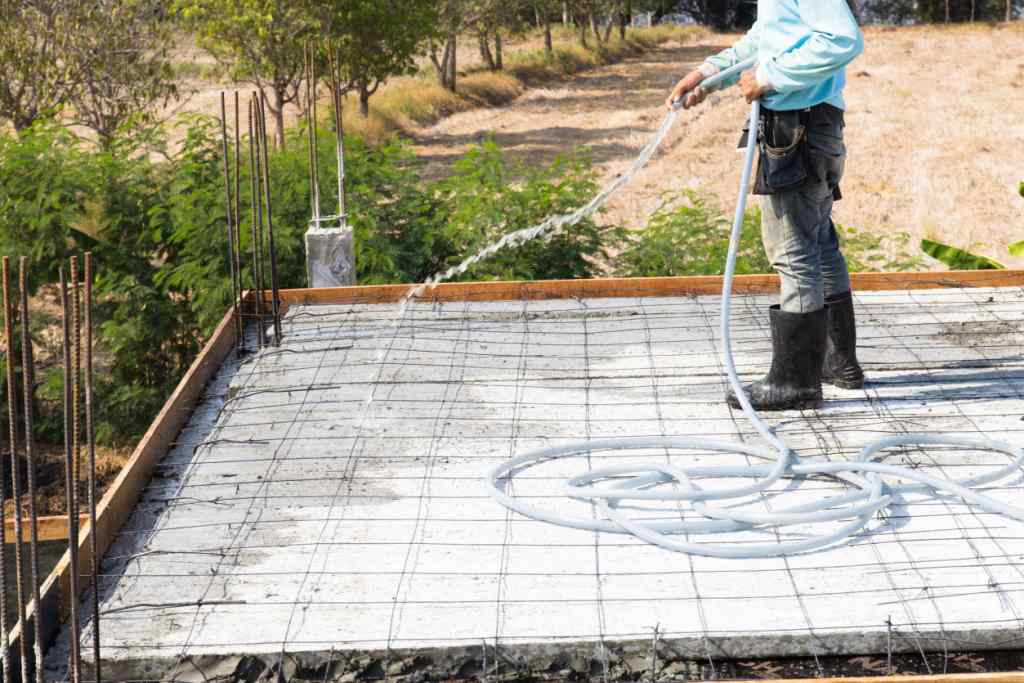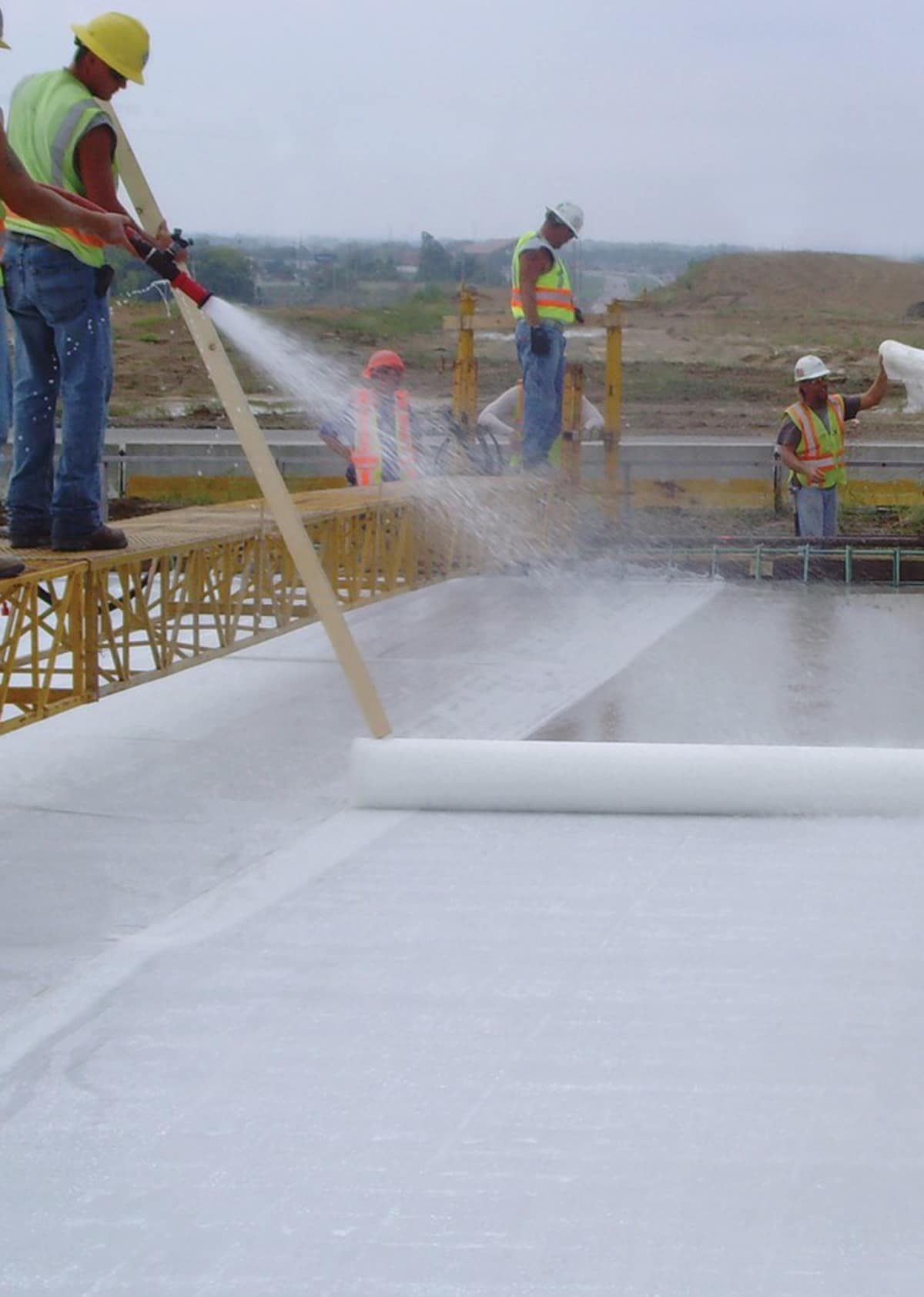
The curing of concrete is the process of keeping the concrete damp or moist and warm after the initial setting of concrete or removal of formwork. Proper curing of concrete maintains the satisfactory moisture content and favorable temperature inside the concrete so that hydration of cement may continue until the desired properties are developed. The curing of concrete must be continued for a reasonable period of time to achieve its desire strength and durability.
There are various methods of curing concrete, which are used on the site depending upon the size and nature of the work. There are three major methods of curing concrete by which concrete can be kept moist and humid or kept at a favourable temperature. Here we have given brief information on different methods of curing concrete, which a site engineer must know.
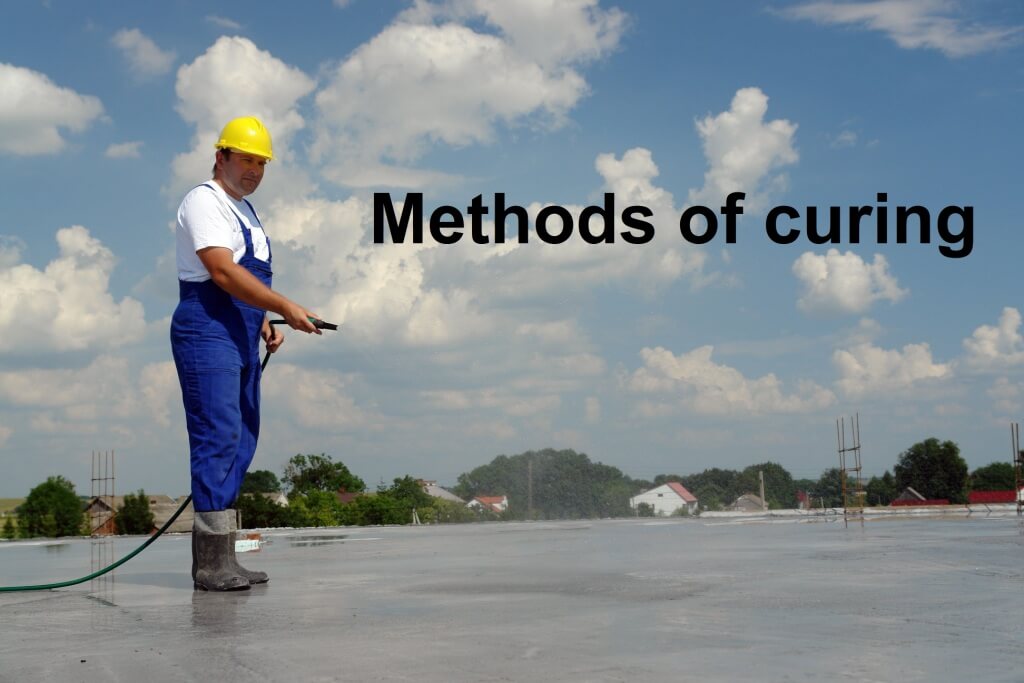
Methods of Curing Concrete
01. Water Curing Method
Water curing method is most general methods of curing as it satisfies all the requirements of curing. These methods maintain the presence of moisture in the concrete during the early hardening period. Water curing can be done in the following types:
(a) Immersion Method:
This is the best water curing method. In immersion method, finished concrete is immersed in the curing tank or curing pond. This method of total immersion is practically not possible unless the concrete is a laboratory test specimen for small precast units.
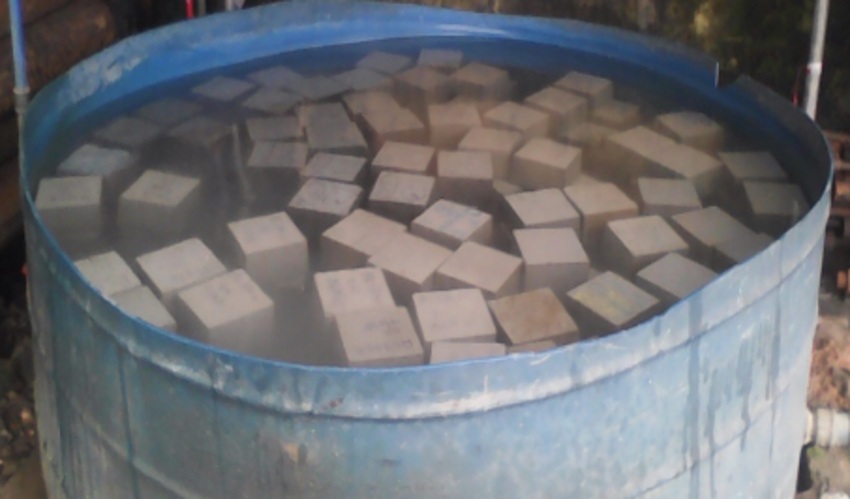
Image Courtesy – Researchgate
(b) Ponding Method:
In the ponding method, small rectangular or square artificial ponds are built with using bunds of clay or lean mortar or sand across and along the concrete surface. Water is filled in small rectangular or square ponds two or three times per day depending upon the atmospheric conditions. This method is very efficient but the amount of water required is huge.
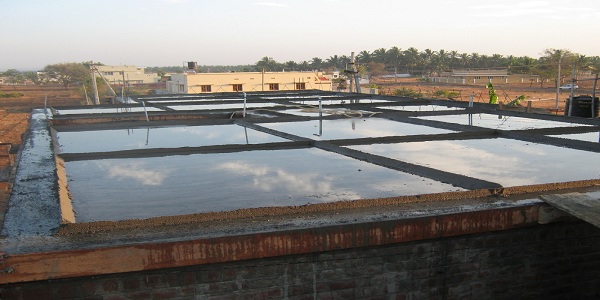
Image Courtesy – Cegyan
(c) Spraying or Fogging Method:
Curing by spraying of water or fogging is one of the conventional methods of curing concrete in the construction industry. It can be an efficient method for curing by supplying additional moisture during hot weather. By using nozzles or sprayers, water is sprayed on the concrete members, which are to be cured.
02. Membrane Curing of Concrete
These methods prevent the loss of mixing water from the surface of the concrete. Sometime concreting is carried out at remote place where there might be an acute shortage of water. The large amount of water required for water curing method is not possible for economy reasons too. Therefore, membrane curing of concrete can be done in the following types:
(a) Wet Covering or Moist Curing Concrete Method:
In moist curing concrete method, water absorbent fabrics are used to maintain moisture on the concrete surface by completely covering the surface immediately after the concrete has hardened sufficiently. They must be continuously kept wet to prevent the fabric from absorbing water from the body of concrete, due to capillary action. Generally jute bags, cotton mats, hussian cloth, etc. are used as a covering.
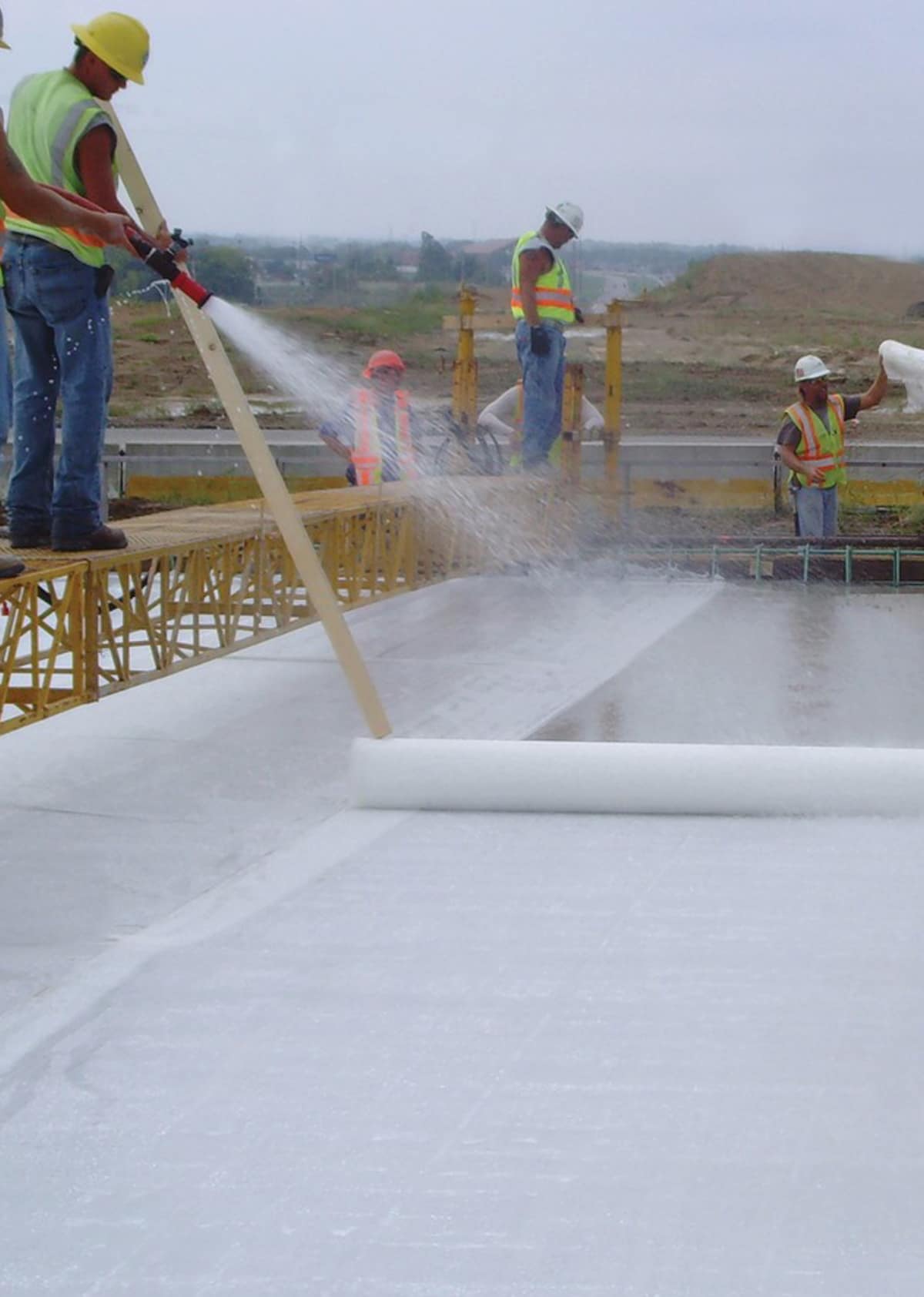
Image Courtesy – Gbanetwork
(b) Plastic Sheeting:
Concrete could be effectively covered with a plastic sheet so that it seals the evaporation of water from concrete. The curing concrete with plastic sheeting, after a short spell of water curing for one or two days is sometimes beneficial. A plastic sheet made from polyethylene film is an effective moisture retarder, lightweight and can be used on horizontal and vertical surfaces as well as on the surface of different shapes and sizes.
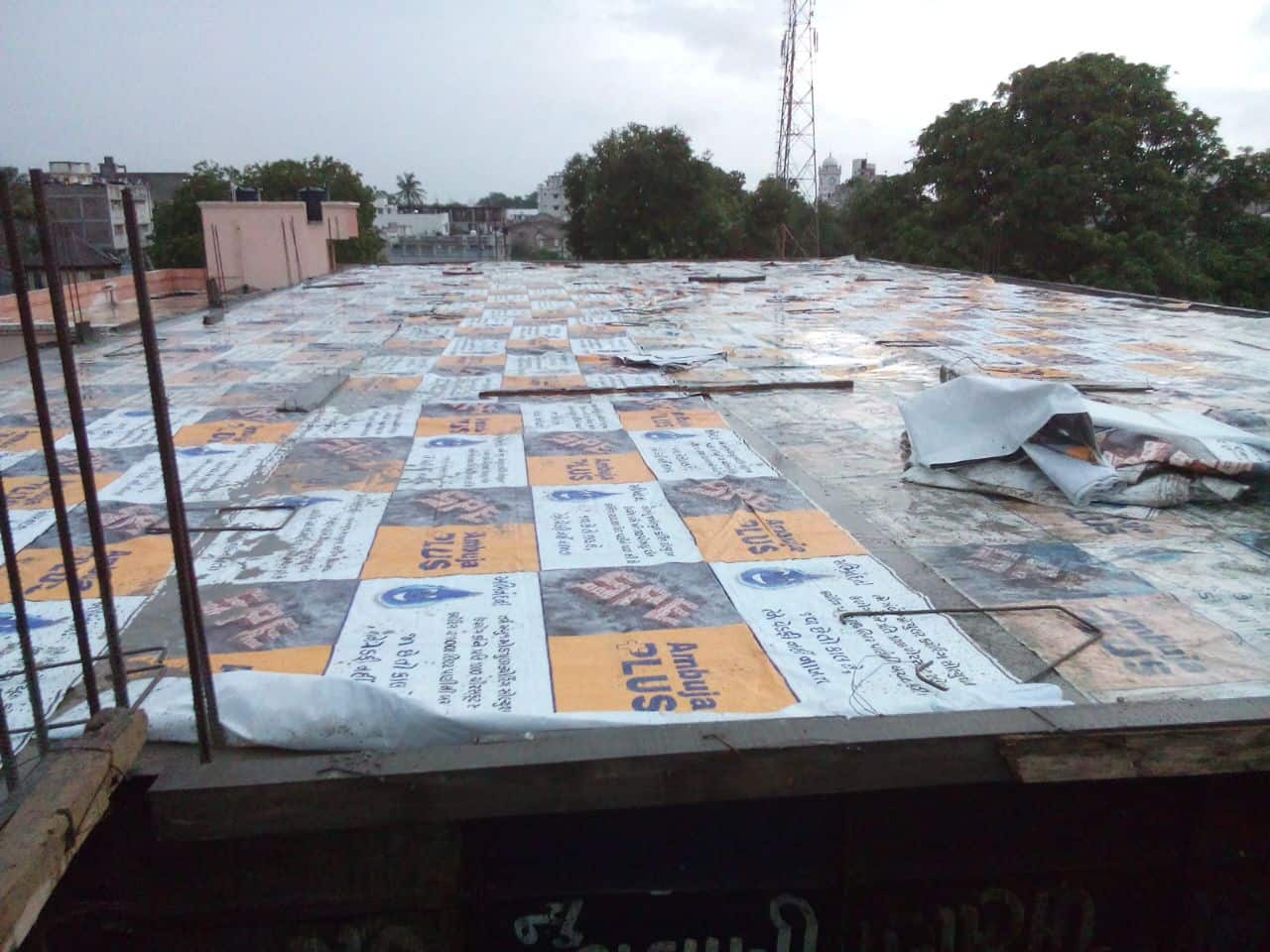
Image Courtesy – Ambuja Knowledge Centre
(c) Concrete Curing Compounds:
Concrete curing compounds form a thin liquid membrane on the concrete surfaces and result in prevention to a certain extent of evaporation losses. Generally, they are available in two types, clear or translucent and white pigmented. The clear or translucent concrete curing compound may contain a fugitive dye to assure complete coverage of the concrete surface by visual inspection. This dye fades as the application is few hours old.

Image Courtesy – Resikon
03. Application of Heat (Steam Curing)
In steam curing, strength gain of concrete is accelerated, by supplying heat and additional moisture to the concrete. When concrete is subjected to higher temperature, it accelerates the hydration process and hence resulting in faster development of strength. Materials subjected to this hardening technique tend to cure more uniformly and much more rapidly than other processes.
In steam curing, objects to be cured are placed inside a chamber or room. An operator can set the temperature and humidity level by using a control panel. The heat and moisture penetrate in the materials quickly hence hydrate the concrete fully and harden them. Steam curing requires a fraction of the time involved with conventional curing and quickly strengthens the products so they can be used immediately.

Image Courtesy – teknologibetonringan
The types of steam curing methods of concrete are as follows:
(a) Steam Curing at Ordinary Pressure:
Steam curing at ordinary pressure is generally done in an enclosed room to minimize heat losses and moisture. This method of curing is often carried out for prefabricated concrete elements, specially prestressed concrete members.
Also Read: How to Cure Concrete by Steam Curing at Ordinary Pressure?
(b) Steam Curing at High Pressure:
This method is something different from ordinary steam curing. In this method, curing is carried out in a closed chamber and superheated steam at high temperature and high pressure is applied on the concrete. Steam curing at high pressure is also known as “Autoclaving”. The autoclaving process is practiced in curing precast concrete products in the factory such as lightweight concrete products.
Electrical curing and infra-red radiation curing are non-conventional methods of curing concrete. These methods are practiced in cold countries such as Russia. The methods of curing concrete vary with different concrete structures or members. All the methods of curing concrete cannot be applied for all type of concrete structures. Choose the appropriate concrete curing method to achieve designed strength, depending upon the specifications of the construction project.
Also Read:
Curing of Concrete: Things to Keep in Mind While Curing
Why Water Requirement is Higher for Curing rather than Making the Concrete?
What Should be the Minimum Curing Period of Concrete?
When to Start Curing of Concrete?




